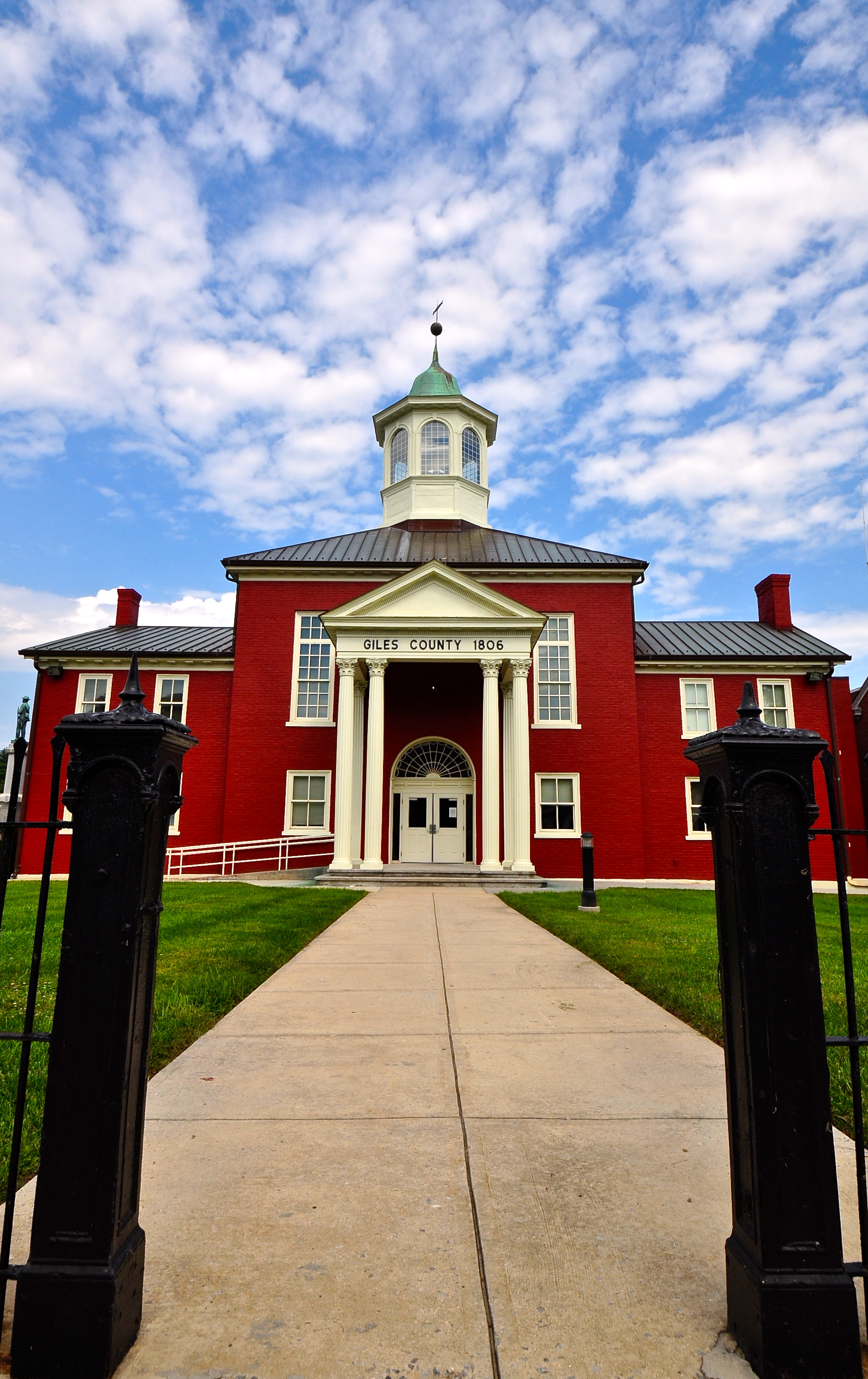|
Dismal Creek
Dismal Creek, a wildland in the George Washington and Jefferson National Forests of western Virginia, has been recognized by the Wilderness Society as a special place worthy of protection from logging and road construction. The Wilderness Society has designated the area as a "Mountain Treasure". With several trails and a series of beautiful streams, this large area is popular with hikers, hunters, horseback riders, and fishermen. The area is part of the Angels Rest Cluster. Location and access The area is in the Appalachian Mountains of Southwestern Virginia, about 3 miles west of White Gate, Virginia. The wildland is mostly composed of the drainage of Dismal Creek, formed by a bowl between Flat Top Mountain on the northwest, Brushy Mountain on the southeast, and Sugar Run Mountain on the north. The following trails give access to the area: *The Appalachian Trail crosses into the area at Sugar Run Mountain on the northeast, then descends and follows Dismal Creek to the poin ... [...More Info...] [...Related Items...] OR: [Wikipedia] [Google] [Baidu] |
Giles County, Virginia
Giles County is a county located in the U.S. state of Virginia on the West Virginia state line. As of the 2020 census, the population was 16,787. Its county seat is Pearisburg. Giles County is included in the Blacksburg- Christiansburg, VA Metropolitan Statistical Area. Giles County is the location of Mountain Lake, one of only two natural fresh water lakes in Virginia. The lake drains into Little Stony Creek, which passes over a waterfall known as The Cascades before reaching the New River. History Giles County was established in 1806 from Montgomery, Monroe, Wythe, and Tazewell counties. The county is named for William Branch Giles who was born in Amelia County in 1762. Giles became a lawyer and from there was elected to the United States House of Representatives where he served from 1790 to 1815. He also served in the Virginia General Assembly from 1816 to 1822. In 1827, he was elected Governor. In all, he served his nation and state around a total of forty years. ... [...More Info...] [...Related Items...] OR: [Wikipedia] [Google] [Baidu] |
Bland County, Virginia
Bland County is a county (United States), United States county located in the Southwest Virginia, southwestern portion of the Commonwealth (U.S. state), Commonwealth of Virginia. Like most of Southwestern Virginia, it is part of the Appalachian region. The county seat is the unincorporated area of Bland, Virginia, Bland. Bland County was created in 1861 from parts of Wythe County, Virginia, Wythe, Tazewell County, Virginia, Tazewell, and Giles County, Virginia, Giles counties in Virginia. The new county was named in honor of Richard Bland, a Virginia statesman who served in the House of Burgesses and the Continental Congress. As of the 2020 United States Census, 2020 census, the county population was 6,270, making it the List of cities and counties in Virginia, 4th least populated county in Virginia. Bland County is also one of the few counties in the United States that do not contain any incorporated municipalities. History The push to create Bland County resulted from ... [...More Info...] [...Related Items...] OR: [Wikipedia] [Google] [Baidu] |
George Washington And Jefferson National Forests
The George Washington and Jefferson National Forests is an administrative entity combining two U.S. National Forests into one of the largest areas of public land in the Eastern United States. The forests cover of land in the Appalachian Mountains of Virginia, West Virginia, and Kentucky. Approximately of the forest are remote and undeveloped and have been designated as wilderness areas, which prohibits future development. History George Washington National Forest was established on May 16, 1918, as the Shenandoah National Forest. The forest was renamed after the first President on June 28, 1932. Natural Bridge National Forest was added on July 22, 1933. Jefferson National Forest was formed on April 21, 1936, by combining portions of the Unaka and George Washington National Forests with other land. In 1995, the George Washington and Jefferson National Forests were administratively combined. The border between the two forests roughly follows the James River. The combine ... [...More Info...] [...Related Items...] OR: [Wikipedia] [Google] [Baidu] |
The Wilderness Society (United States)
The Wilderness Society is an American non-profit land conservation organization that is dedicated to protecting natural areas and federal public lands in the United States. They advocate for the designation of federal wilderness areas and other protective designations, such as for national monuments. They support balanced uses of public lands, and advocate for federal politicians to enact various land conservation and balanced land use proposals. The Wilderness Society also engages in a number of ancillary activities, including education and outreach, and hosts one of the most valuable collections of Ansel Adams photographs at their headquarters in Washington, D.C. The Wilderness Society specializes in issues involving lands under the management of federal agencies; such lands include national parks, national forests, national wildlife refuges, and areas overseen by the Bureau of Land Management. In the early 21st century, the society has been active in fighting recent politic ... [...More Info...] [...Related Items...] OR: [Wikipedia] [Google] [Baidu] |
Angels Rest Cluster
The Angels Rest Cluster is a region in the Jefferson National Forest recognized by The Wilderness Society for its diversity of habitats with steep mountains, an isolated valley, a waterfall and wetlands. It is named after a high point on Pearis Mountain with views of the New River and surrounding area. It contains two large wild areas connected by the Appalachian Trail. Description The Angels Rest Cluster contains two wildlands recognized by the Wilderness Society as “Mountain Treasures”, areas that are worthy of protection from logging and road construction. The areas in the cluster are: * Mill Creek (conservation area) * Dismal Creek Location and access The northeast end of the cluster is about one mile south of Pearisburg, Virginia. Roads and trails in the cluster are shown on National Geographic Map 787 (Blacksburg, New River Valley). A great variety of information, including topographic maps, aerial views, satellite data and weather information, is obtained by sele ... [...More Info...] [...Related Items...] OR: [Wikipedia] [Google] [Baidu] |
Appalachian Mountains
The Appalachian Mountains, often called the Appalachians, (french: Appalaches), are a system of mountains in eastern to northeastern North America. The Appalachians first formed roughly 480 million years ago during the Ordovician Period. They once reached elevations similar to those of the Alps and the Rocky Mountains before experiencing natural erosion. The Appalachian chain is a barrier to east–west travel, as it forms a series of alternating ridgelines and valleys oriented in opposition to most highways and railroads running east–west. Definitions vary on the precise boundaries of the Appalachians. The United States Geological Survey (USGS) defines the ''Appalachian Highlands'' physiographic division as consisting of 13 provinces: the Atlantic Coast Uplands, Eastern Newfoundland Atlantic, Maritime Acadian Highlands, Maritime Plain, Notre Dame and Mégantic Mountains, Western Newfoundland Mountains, Piedmont, Blue Ridge, Valley and Ridge, St. Lawrence Valley, Appalac ... [...More Info...] [...Related Items...] OR: [Wikipedia] [Google] [Baidu] |
United States Geological Survey
The United States Geological Survey (USGS), formerly simply known as the Geological Survey, is a scientific agency of the United States government. The scientists of the USGS study the landscape of the United States, its natural resources, and the natural hazards that threaten it. The organization's work spans the disciplines of biology, geography, geology, and hydrology. The USGS is a fact-finding research organization with no regulatory responsibility. The agency was founded on March 3, 1879. The USGS is a bureau of the United States Department of the Interior; it is that department's sole scientific agency. The USGS employs approximately 8,670 people and is headquartered in Reston, Virginia. The USGS also has major offices near Lakewood, Colorado, at the Denver Federal Center, and Menlo Park, California. The current motto of the USGS, in use since August 1997, is "science for a changing world". The agency's previous slogan, adopted on the occasion of its hundredt ... [...More Info...] [...Related Items...] OR: [Wikipedia] [Google] [Baidu] |
Calcicole
A calcicole, calciphyte or calciphile is a plant that thrives in lime rich soil. The word is derived from the Latin 'to dwell on chalk'. Under acidic conditions, aluminium becomes more soluble and phosphate less. As a consequence, calcicoles grown on acidic soils often develop the symptoms of aluminium toxicity, i.e. necrosis, and phosphate deficiency, i.e. anthocyanosis (reddening of the leaves) and stunting. A plant that thrives in acid soils is known as a calcifuge. A plant thriving on sand (which may be acidic or calcic) is termed psammophilic or arenaceous (see also arenite). Examples of calcicole plants * Ash trees (''Fraxinus'' spp.) * Honeysuckle (''Lonicera'') * ''Buddleja'' * Lilac (''Syringa'') * Beet * ''Clematis'' * ''Sanguisorba minor'' * Some European orchids * Some succulent plants genera ''Sansevieria'' and ''Titanopsis'' or cacti genus ''Thelocactus ''Thelocactus'' is a genus of flowering plants in the cactus family Cactaceae. Members of the genus are ... [...More Info...] [...Related Items...] OR: [Wikipedia] [Google] [Baidu] |
Thuja Occidentalis
''Thuja occidentalis'', also known as northern white-cedar, eastern white-cedar, or arborvitae, is an evergreen coniferous tree, in the cypress family Cupressaceae, which is native to eastern Canada and much of the north-central and northeastern United States. It is widely cultivated as an ornamental plant. Common names Its additional common names include swamp cedar, American arborvitae, and eastern arborvitae. The name arborvitae is particularly used in the horticultural trade in the United States; it is Latin for 'tree of life' – due to the supposed medicinal properties of the sap, bark, and twigs.''Thuja'', American Cancer Society, last revised 6/19/2007available online/ref> It is sometimes called white-cedar (hyphenated) or whitecedar (one word) to distinguish it from ''Cedrus'', a distantly related genus of trees also known as cedars. Description Unlike the closely related western red cedar (''Thuja plicata''), northern white cedar is only a small or medium-sized tree ... [...More Info...] [...Related Items...] OR: [Wikipedia] [Google] [Baidu] |
Inventoried Roadless Area
Inventoried Roadless Areas are a group of United States Forest Service lands that have been identified by government reviews as lands without existing roads that could be suitable for roadless area conservation as wilderness or other non-standard protections. The Inventoried Roadless areas include approximately of land in 40 states and Puerto Rico. Most of these lands are in the western portion of the lower 48 states and Alaska.Maps of inventoried roadless areasUS Forest Service Maps Idaho alone contains over of inventoried roadless areas. The inventoried roadless areas range from large areas with wilderness characteristics to small tracts of land that are immediately adjacent to wilderness areas, parks and other protected lands. Roadless Area Review and Evaluations (RARE) The first review of Forest Service roadless lands was started in 1967 after the creation of the Wilderness Act by Congress in 1964. This effort was called the “Roadless Area Review and Evaluation” or “ ... [...More Info...] [...Related Items...] OR: [Wikipedia] [Google] [Baidu] |
Roadless Area Conservation
Roadless area conservation is a conservation policy limiting road construction and the resulting environmental impact on designated areas of public land. In the United States, roadless area conservation has centered on U.S. Forest Service areas known as inventoried roadless areas. The most significant effort to support the conservation of these efforts was the Forest Service 2001 Roadless Area Conservation Rule (Roadless Rule). Concept Access roads provide convenient access for industry as well as for a variety of recreational activities, such as sightseeing, fishing, hunting, and off-roading. However, these activities can cause erosion, pollution, species loss, and loss of aesthetic appeal. In addition, the building of roads can lead to further development of "splinter roads" that take off from them, and the encroachment of human settlement and development in sensitive areas. In the United States, about 30%, of National Forest lands in 38 states and Puerto Rico are roadless a ... [...More Info...] [...Related Items...] OR: [Wikipedia] [Google] [Baidu] |








